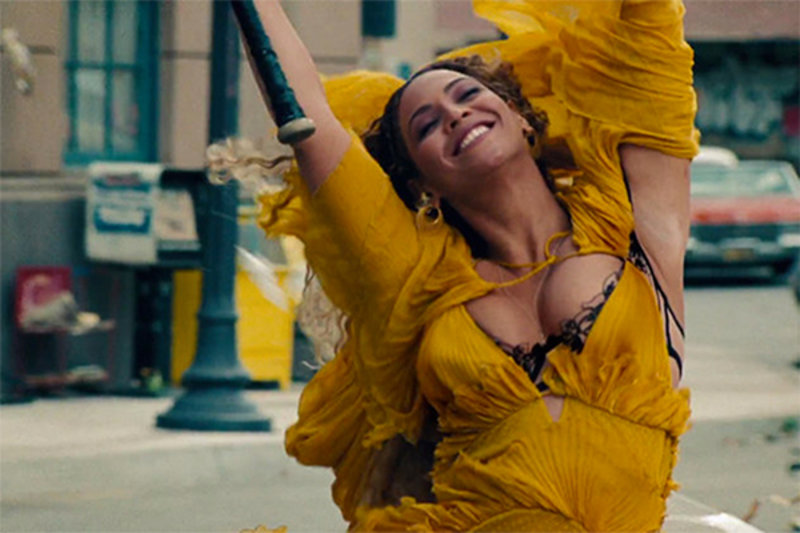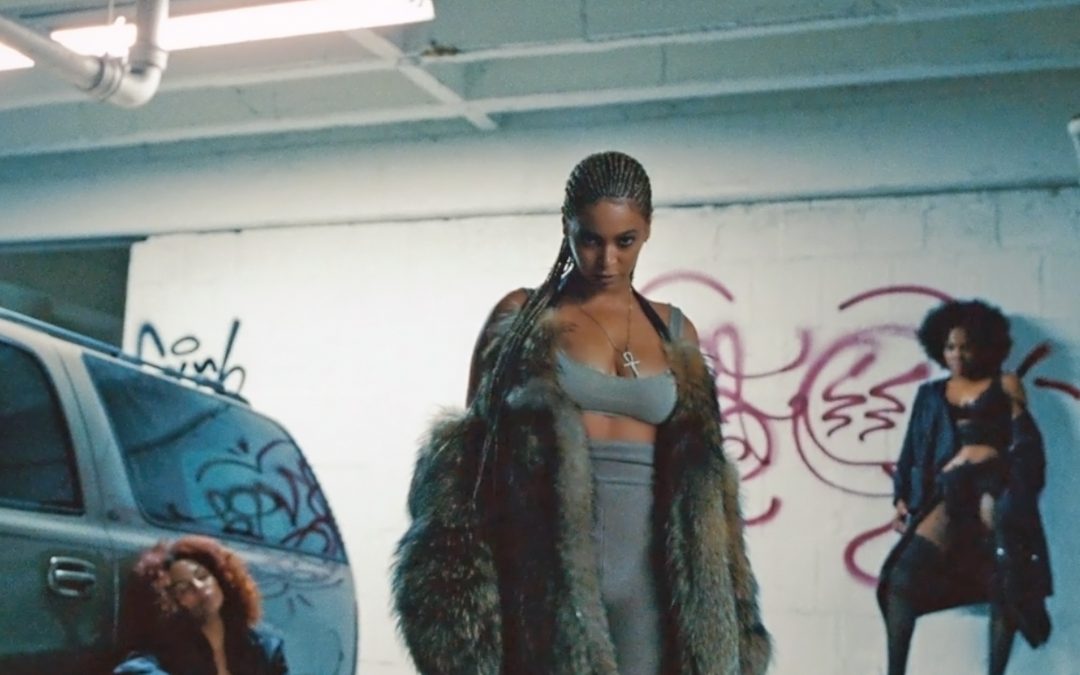Prince is gone. I’d be remiss if I didn’t at least acknowledge that fact this week. A spectacular, epoch-defining artist has passed from this world back into the funky, psychedelic ether from whence he sprung. The world is a darker place for his passing.
But in the same week that one pop icon entered the throes of death, another gave us life. On Saturday night, Beyoncé’s mysterious Lemonade project aired on HBO, and the internet was torn asunder. Lemonade, as it turns out, is Beyoncé’s second “visual album,” an hour-long visual accompaniment to her latest LP of the same name.
At the risk of joining the frothing hordes of the Beyoncé fandom (whose chorus of “yaaaaas-queen-slay-werq” is still echoing across the internet), I have to admit Lemonade is stunning. Laced with spoken-word courtesy of Somali-British poet Warsan Shire, anchored in the visionary direction of Kahlil Joseph, and including appearances by the mothers of Trayvon Martin, Eric Garner, and Michael Brown, it’s a multimedia masterpiece
Lemonade is the kind of work that will no doubt spark an endless feedback loop of think-pieces and criticism–and it should. Black art, particularly black populist art, has been consumed for hundreds of years with little to no substantial critical engagement, so the saturation is not only exciting but necessary.
That said, one particular aspect of Lemonade that has gone largely unaddressed in critical circles thus far is one of its most obvious–it’s a visual album. Obviously, it exists as a traditional digital album as well, but it’s interesting to note that Beyoncé and her camp have explicitly referred to the visual album in press releases. And it makes sense why. Divorcing the visuals, and the through-line of Shire’s poetry from the rest of the album results in a work that is far less ambitious. The contributions from other young, black artists elevates Lemonade out of the realm of traditional pop album and transforms it into a staggering collage of both Beyoncé’s personal journey through infidelity, and a larger portrait of Southern American black womanhood. As an LP Lemonade is great, but as a visual album, it’s transcendent.
Ok, so Beyoncé made a sweet music video to go along with her whole album. So what?
On a macro level, the success of Lemonade as a visual album signifies a massive shift in the way we consume music in the 21st century–namely that the album is dying.

In order to understand this phenomenon though, we must first travel back in time. The beginning of music publishing as we now know it has its roots in 19th century Germany, where (thanks to developments in printing technology, and the early stirrings of copyright law and performance rights) publishing houses began to spring up. Publishers, some of whom still exist today, published music for a variety of reasons, but a great deal of published sheet music was sold for use within private homes, where people could sit around a piano and play their favorite new songs by Schuman or Mendelssohn or any of those other sad white dudes. Often, publishers would sell collections of different songs or other short pieces bound together in books called albums. See where this is headed?
Later, after the advent of recording technology, collections of 78RPM record (different from the 33 1/3RPM records most of us are familiar with) were often published in bound bundles which were referred to as albums, in reference to the aforementioned collections of sheet-music. I know, not terribly imaginative but people had other things to worry about, like World War II and that sinful jazz music!
So, when LPs were introduced in 1948, were introduced in 1948 and became the record industry standard, it seemed appropriate to refer to the collection of songs contained on a single long-playing record as an album. And thus, the album as we know it was born.
The album has continued to endure as the primary organizational structure of popular music, despite rapidly changing technology. Even now, in an era dominated by digital music, artists still release “albums”, collections of songs arranged in a specific, finite order, despite the fact that the technical limitations which necessitated the album in the first place have long since vanished. After all, digital albums are essentially just playlists arranged in a more or less arbitrary fashion.
The album has many virtues–it’s concise, it’s flexible, it allows artists an opportunity to work within an extended format. As long as human beings have been making art, certain genres or forms have fallen in and out of vogue. The album has endured for the same reason that sonata-allegro form was the most popular compositional structure of the Classical era, or why jazz musicians will never not utilize the twelve bar blues, or why you’ll watch every episode of Scooby Doo despite the fact that they’re all basically the same. Humans love patterns, whether making them or breaking them (or wearing them). An album is just another pattern.
But perhaps the age of the album is drawing to a close. Lemonade isn’t the first example, even in recent memory, of an artist pushing past the traditional confines of the album. In 2011, Bjork released her seventh studio album, Biophilia, as a series of apps which included gameplay and exclusive content for each track of the album. In 2013, Lady Gaga attempted a similar thing with the release of Artpop as both an album and an app, but it was *ahem* less successful. Recently, Kanye West made headlines for revealing that he was making major production changes to The Life of Pablo even after it was released for streaming. He has since made changes to 2013’s Yeezus on streaming platforms as well.
Though all of these examples vary in their specifics, they each represent critically and commercially visible artists eroding traditional notions about what constitutes an album. If a cultural juggernaut like Beyoncé can create something as formally radical as Lemonade without anyone even noticing, surely that says some things about the fate of the album as we know it.
I think it says that the way we consume music, and by extension culture, is changing faster and more dramatically than we even currently understand.
I think it speaks to how radically fragmented the cultural mainstream has become, and how, in turn, artists are demonstrating and increasing willingness to flout long-established conventions.
And I think it says that we can expect even more artists to create the kind of dense, powerful, ambitious work that Beyoncé has put forth on Lemonade.
I for one can’t wait to see how it turns out.
[wc_spacing size=”40px”]
[wc_divider style=”solid” line=”single” margin_top=”” margin_bottom=””]


You must be logged in to post a comment.